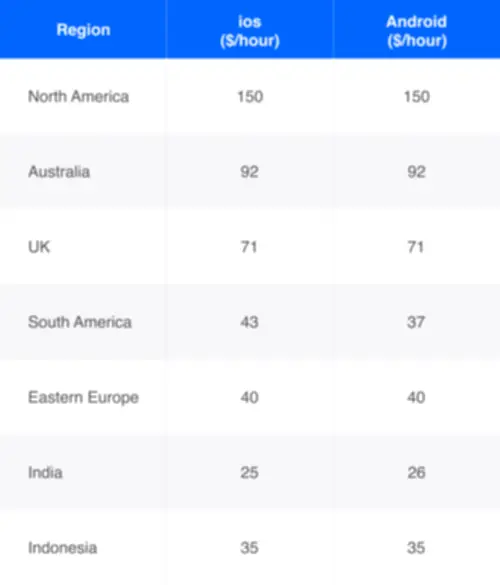Organizations want a deep understanding of their developer expertise to enhance engineering efficiency considerably and must actively develop needed capabilities through targeted initiatives. DORA metrics alone are insufficient for driving meaningful progress over time, particularly in high-performing groups. Agile methodologies, automated code evaluate processes, and steady improvement can considerably enhance change lead time. DevOps groups can quickly translate person stories or function requests into actual code that may be deployed by adopting agile processes, alongside delivery usually and in small batches.

By monitoring key metrics, you can see the influence of your modifications and reveal the return on investment (ROI) of your DevOps initiatives. This data-backed evidence is important for securing buy-in from stakeholders and justifying further investments in DevOps. This is the very best degree of maturity, the place DevOps practices are totally built-in into the organization’s culture. This looks like ingrained continuous enchancment, intensive and self-service automation, and extremely cross-functional teams. Extremely mature DevOps organizations concentrate on optimizing their DevOps processes, infrastructure, and security. The first two metrics are a measure of software supply performance “tempo”, also referred to as Improvement Velocity.
DevOps teams can considerably improve their engineering efficiency and business outcomes by repeatedly monitoring and enhancing these metrics. Jellyfish analyzes your software program supply pipeline to pinpoint bottlenecks and inefficiencies. Inspecting knowledge on code deployments, testing, and different engineering actions reveals areas with delays or different points. For instance, it might highlight lengthy lead instances in particular stages of your CI/CD pipeline, indicating a necessity for automation or course of improvements.
If you ship in small batches, it should also be easier to find and resolve problems. Lead Time for Modifications (LTC) is the amount of time between a commit and production. Our experience within delivery teams at shoppers globally suggests that the second-order metrics introduced in the graphic below are very helpful when seeking to efficiently implement the DORA metrics. The 4 DORA metrics were conceived by Google’s DevOps Analysis and Assessments group.
What Are The Four Primary Devops Metrics? Dora’s 4 Keys
To maximize the benefits of AI, organizations must focus on human oversight, integrating AI-driven tools into structured improvement processes, based on Harvey. Builders must stay accountable for the quality of AI-generated code, guaranteeing that software meets safety, compliance and efficiency standards. Jellyfish provides visibility into the work of different engineering groups, breaking down silos and fostering better collaboration. By making engineering knowledge transparent, it facilitates improved communication and alignment between development and IT operations.
Dora Metrics: How To Measure Open Devops Success
By fostering a shared understanding of those metrics and their implications, groups can work collectively to determine root causes of performance points and develop methods to deal with them. Regular reviews and retrospectives may help teams continuously refine their processes and procedures based mostly on the insights gained from the DORA metrics. You can use DORA metrics to analyze efficiency developments for specific purposes and providers. Comparing the metrics for an software over time exhibits the place improvements are being made and areas the place enhancements have stalled. You can use these insights during retrospectives to identify bottlenecks or recurrent points. The staff can then implement targeted improvements to streamline their workflows.
Lead time for changes is the time it takes for a code change to succeed in the live surroundings. DORA’s analysis goes past the 4 keys, exploring varied capabilities that contribute to excessive efficiency. You can learn more about these capabilities and their influence on software program delivery by visiting the Functionality catalog.
We’ll look at how these metrics could be successfully measured and interpreted and talk about their impact on developer productivity and total business outcomes. By understanding and leveraging DORA metrics, improvement teams can achieve useful insights into their performance, drive steady enchancment, and align their efforts with broader organizational targets. The DORA report finds that high-performing organizations are in a place to deploy software program more incessantly, with shorter lead occasions, and with lower change failure charges. High-performing organizations also have better operational performance, that means that they’re ready to resolve incidents more quickly and with less impact on their prospects. DORA metrics supply leaders a pointy lens into their DevOps effectivity, merging speed with quality in software program delivery. Imply Lead Time for Adjustments (MLTC) helps engineering leaders understand the effectivity of their improvement process as soon as coding has begun.
Nonetheless, DORA metrics may be onerous to obtain since data resides in several tools deployed throughout the DevOps toolchain. You have to correlate data from varied sources such as GitHub, Jira, PagerDuty, and so on, which may be tough, time-consuming and irritating. Change Failure Fee (CFR) calculates the share of incidents stemming from code changes, functioning as a quality control metric that keeps speed and stability balanced. A low CFR displays well-tested code, minimizing disruption from frequent updates. Monitoring CFR helps groups catch high quality issues early, preventing in depth service disruptions.
Following a maturity model helps teams embed steady testing and real-time feedback into their processes, which in turn lets them catch defects early and preserve high software program high quality. This results in extra stable purposes, fewer disruptions, and improved customer satisfaction. A DevOps maturity model helps teams identify areas to streamline workflows and automate repetitive duties, accelerating release cycles and reducing time-to-market. It also enhances system stability by emphasizing monitoring, logging, and automatic restoration, minimizing deployment failures, downtime, and production points. Executives want to know the advantages of tracking DORA metrics and how it may help the organization enhance its software program delivery performance. They also should help group AI Software Development with the resources and support for successful implementation.
- Quite than anticipating downtime and dealing with it gracefully, many could assume your service will always be obtainable.
- The aim of delivering code shortly to manufacturing is to ship as many times as potential.
- The team can then implement focused enhancements to streamline their workflows.
- Something that takes greater than a day may point out poor alerting or poor monitoring and can outcome in a bigger number of affected methods.
- Integrating monitoring and alert techniques offers real-time notifications of potential problems, resulting in quicker intervention.
For leadership at software program growth organizations, these metrics provide specific data to measure their organization’s DevOps efficiency, report back to administration, and recommend enhancements. High Quality code and frequent deployments contribute to the general effectivity of high-performing DevOps groups. By specializing in the entire software program delivery process and using tools like Code Local Weather Velocity, teams could make data-driven choices to enhance their deployment pipeline. Monitoring deployment frequency measures and the failure fee metric helps operations teams determine alternatives for improvement and align with enterprise goals.

These metrics supply a standardized framework for measuring and evaluating software delivery processes throughout totally different groups and organizations. DORA metrics offer a comprehensive framework for assessing software program delivery performance based mostly on 4 key metrics. These metrics are designed to measure important elements of the software supply course of and supply organizations with actionable information to reinforce their delivery practices. As Soon As the necessary data is collected, organizations can analyze and interpret the DORA metrics to gain insights into their software program delivery performance. Visualizing the metrics via dashboards and reports can help establish tendencies, outliers, and potential bottlenecks, facilitating data-driven decision-making and targeted enchancment efforts. Importantly, DORA metrics are carefully linked to enterprise outcomes and customer satisfaction.
The share of deployments that lead to a manufacturing failure is identified as the Change Failure Rate (CFR), and it’s determined by dividing the whole variety of deployments by the variety of incidents. Leaders can use this info to gauge the caliber of code being released and, consequently, how much time the staff is spending troubleshooting bugs. Engineering leaders can higher analyze their development process’ efficiency as quickly as coding has started by utilizing Imply Lead Time for Adjustments (MLTC). In less than a day, the top groups can go from commitment to production, which measures how rapidly the work shall be delivered to clients. Incorporating these DORA metrics in evaluations allows leaders to comprehensively perceive factors influencing developer productiveness.
If you utilize the metrics to assess software developers, you’ll take your staff back to skill-based silos where they optimize for their own outcomes. Your change failure price is the proportion of modifications leading to a fault, incident, or rollback. To observe change failure charges, you must hold a log of all changes that trigger a production concern. Deployment frequency measures how often you deploy to production or to end users.

